An Eastern Screech Owl Experience
Dateline – Winter 2019 – Carrollton, Texas
It’s about that time again. In a few more weeks it will be exactly one year since a mated pair of Eastern Screech Owls moved into our accidental owl house. The two diminutive owls went on to raise a brood of muppetesque offspring, and we hope very much that they will be back again this year.
Eastern Screech Owls are very popular birds in Dallas/Fort Worth for obvious reasons. They are small in size and charming in both appearance and behavior. For a little context, an adult Eastern Screech Owl is about the size of a grown man’s hand–palm and fingers. Just the right size for a residential backyard!
Many folks across the metroplex try to encourage these little owls to nest in their yards by installing bird boxes that they have built or bought. Nesting boxes are hung with much consideration given to their placement and much care given to their upkeep. Homeowners often guard these boxes against squirrels and other interlopers, to allow time for the owls to find them and stake a claim. Some people work very hard to create conditions optimal for attracting owls ready to raise a family.
But that’s not how it was for us. Our backyard Eastern Screech Owls were more of a lucky accident. Here’s how it happened…
The story of our owl box really begins almost 20 years ago, when my kids and I developed an interest in a species of falcon known as the American Kestrel. Kestrels are small birds of prey–roughly the size of a Blue Jay. They have beautiful and colorful plumages, and they engage in intriguing behaviors. We had hoped to attract a pair of these cavity-nesting falcons to our backyard by building and installing a custom designed American Kestrel nesting box.

first occupants—European Starlings.
Kestrels prefer a habitat that includes relatively large short-cut grassy fields (think vacant lots) where they can hunt the grasshoppers, mice, and lizards that make up the bulk of their diet. Our residential backyard was not a prime location. It did not meet many of the key requirements to make the area attractive to nesting kestrels.
I went ahead and built and installed a kestrel box anyways. I hung it high under the eaves of our two-story home in a place that had a commanding view of our backyard—and those of several of our neighbors. Although I wasn’t terribly hopeful that we would attract a pair of kestrels, I reasoned that surely it wouldn’t hurt to try.
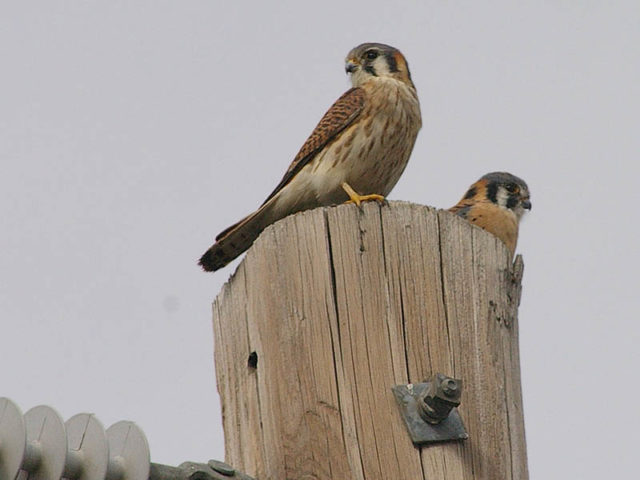
On a couple of occasions I caught a male American Kestrel inspecting the nest box, but unfortunately none ever moved in. Instead, another local cavity nester—the much more common European Starling—found the box to be just to its liking.
Year after year it was European Starlings—and not American Kestrels—that nested in our backyard bird box. Each spring and summer the nest box produced multiple broods of baby starlings. One spring we even had a momma Fox Squirrel find a way to reach the box, and she raised a litter of pups there between starling broods.
This obviously was not the desired outcome, but I was ok with it… All of our urban critters need a good home, and I was happy that these starlings and squirrels were able to use the box to their advantage.
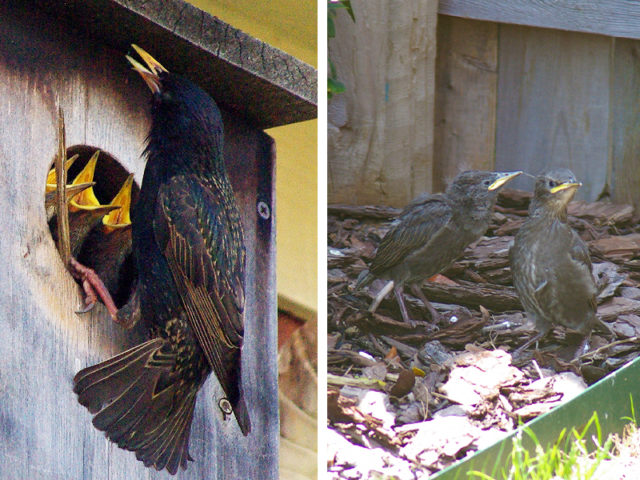
It all came to an end when it was time to have the exterior of the house painted. After 10 years of hanging high on the side of our house it was time for the nest box to come down. I asked the painters to kindly remove the box when they addressed that part of the house.
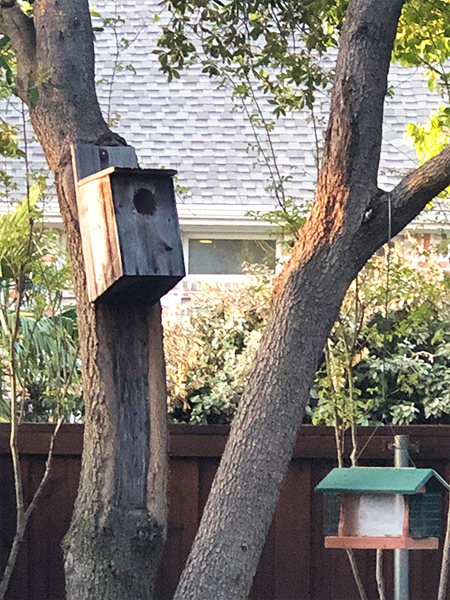
After the bird box came down I stowed it in the garage, never really expecting to use it again.
That changed a year or two later when a big, nasty North Texas thunderstorm rolled through and snapped off a major branch the big Live Oak growing in our back yard. The storm damage left an ugly scar on the trunk of the tree, and it occurred to me that maybe I could cover it with that old bird box I had stored in the back of the garage.
So, that’s what I did. I tacked the nesting box on the scarred tree trunk and hoped for the best. The location wasn’t optimal—the box was installed at a slight angle and was probably a little too low to the ground, but I thought maybe some backyard critter could make use of it nonetheless.
Perhaps not surprisingly, it was Fox Squirrels that moved in first. For the first couple of years it was squirrels that nested and raised their litters in the new nest box location.
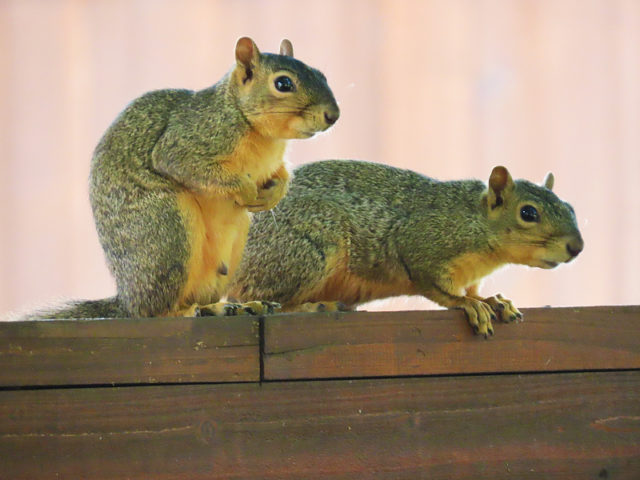
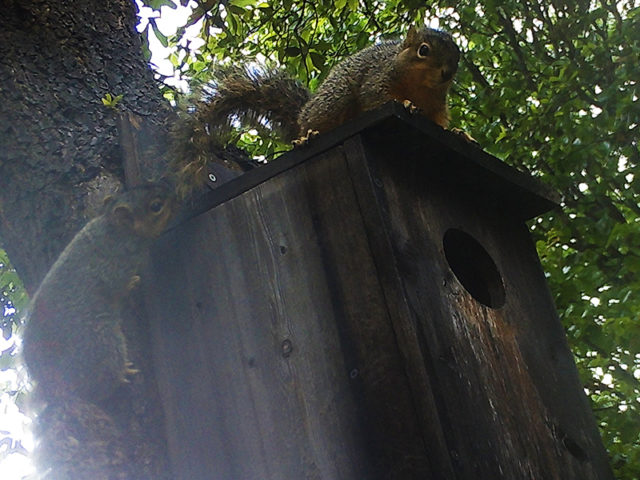
Then one cold winter morning everything changed.
I was coming home from a predawn dog walk, and I cut through the alley as a shortcut to our front door. As I walked along in the half-light, the familiar gentle trill of an Eastern Screech Owl reached my ears. And as I turned the corner, I caught a glimpse of a small, stocky bird flying from a neighbor’s backyard into my own. I began to suspect that we might have a new tenant taking up residence in our backyard bird box.
Later that morning, I stepped outside to take a closer look and was pleased to find this little face staring back at me from inside the box.
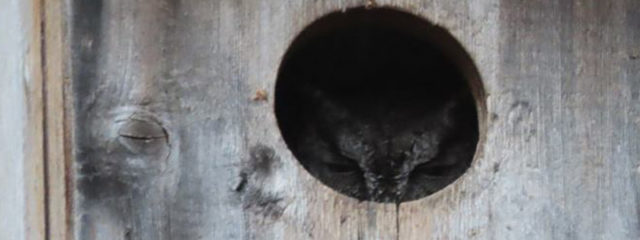
As it turns out, kestrel boxes and screech owl boxes are built to the exact same specification, and this little Eastern Screech Owl approved. Now all he needed to do was attract a mate.
Within just a couple of days he had done just that. And as I mentioned earlier, the pair went on to raise a brood of three healthy little owlets.
I set up some trail cameras to help keep tabs on the action. Here’s the story in pictures…
February 25, 2019
Our intrepid little screech owl has staked his claim. He’s been guarding the entrance for about 3 days now. No sign of a mate yet—but that doesn’t mean there isn’t one!
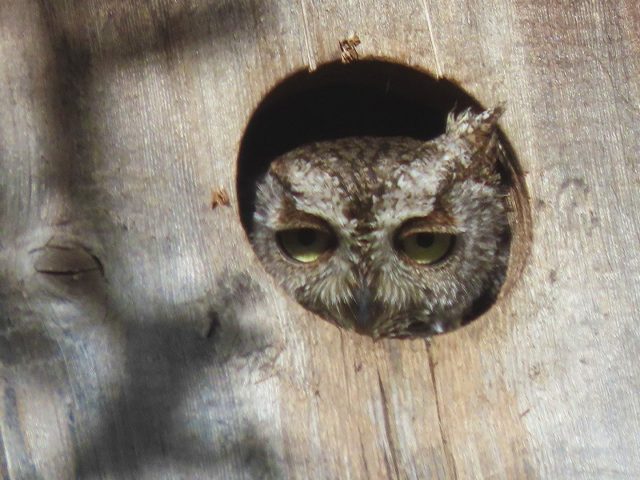
March 7, 2019
Almost 3 weeks in and our little hero is having to guard his home against other interested interlopers. Do we have a mate yet!?!


just to the left of the bird box
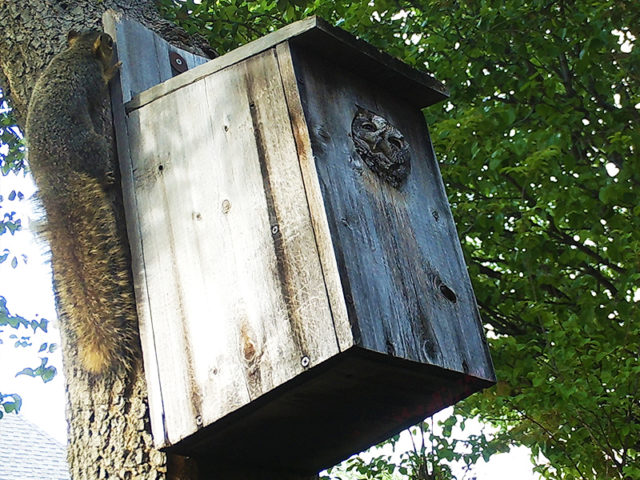

March 9, 2019
The first indications that something has changed… The male has started bringing food back for the female. She is certainly incubating eggs!
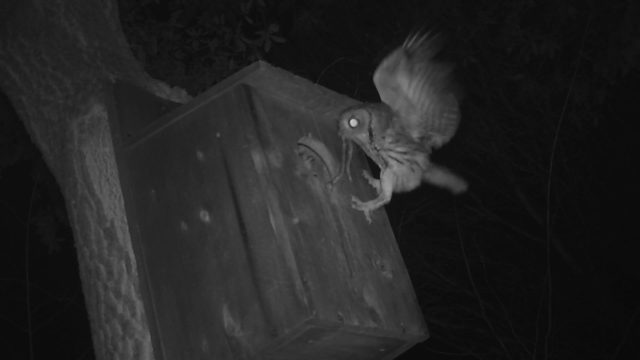
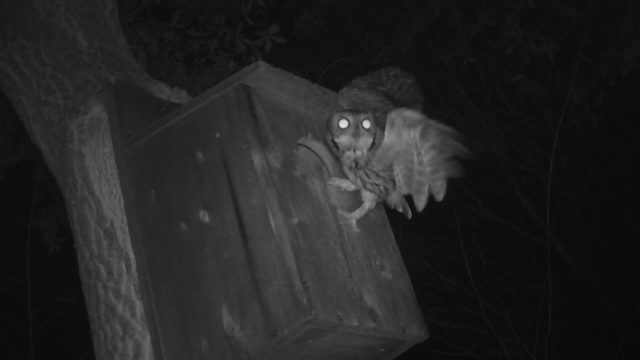
March 22, 2019
This pair of owl eyes has been staring back at me for right around 30 days now. Subtle changes in the owls’ behavior indicates that hatchlings are present or imminent!
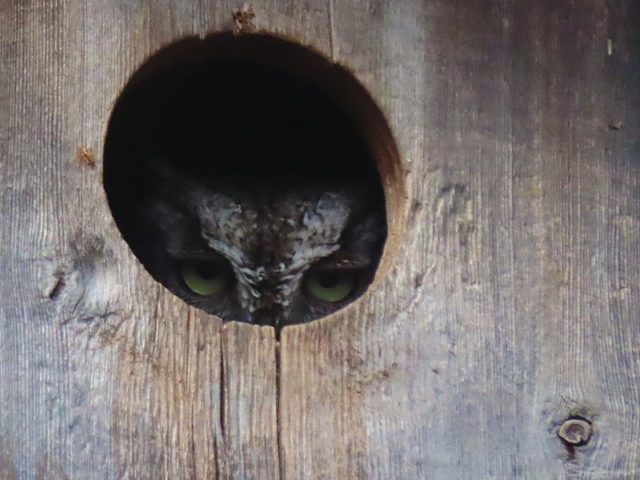


appears to have the banding of a Copperhead
March 30, 2019
I was reading up on our Eastern Screech Owls today. The article I found said, that when not hunting, the male can always be found perched somewhere close to the nest. So, I put the assertion to the test… I went out and had a quick look around. Sure enough, the claim is true
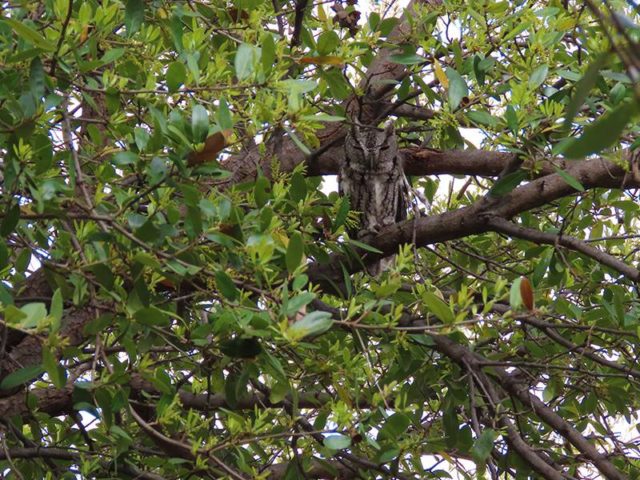
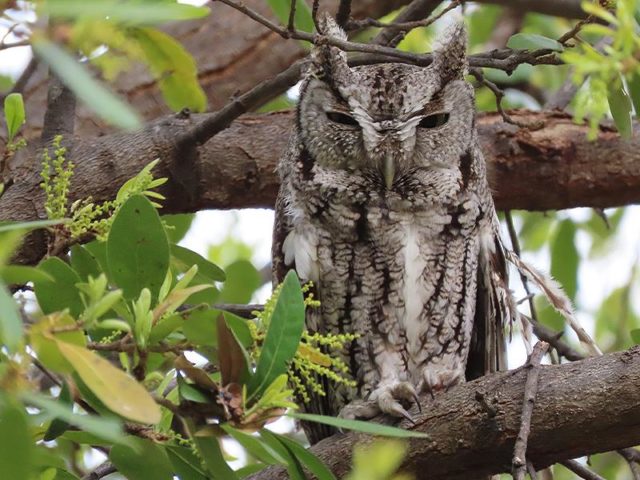
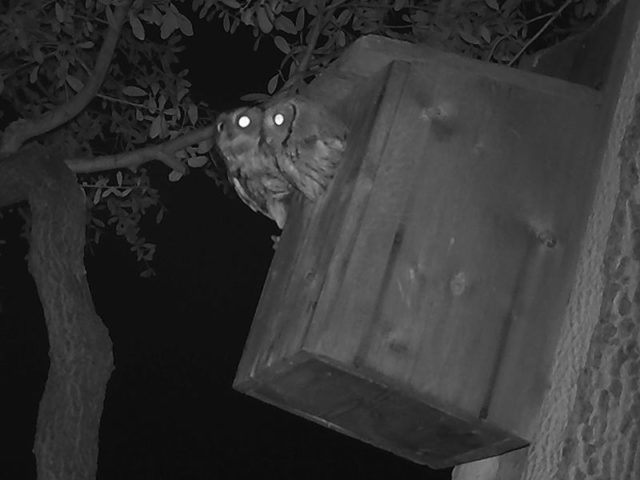
April 2, 2019
This resolute little guy impresses me with his dedication to his family. When he is not out gathering food, he sits here, just a few branches away from the nest, keeping a close eye on things.
It makes me wonder sometimes what a sense of responsibility feels like for a critter like this little screech owl. Were does the drive come from and how does he know to honor it.
I imagine a sense of obligation may not feel too different for the owl than it does for us. The objective outcome is certainly the same–keep your family safe and see your offspring through to adulthood.
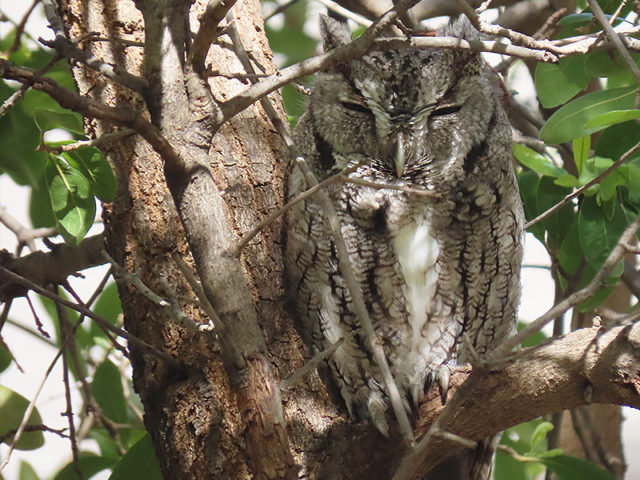
April 4, 2019
On this night dad Owl has captured a rat that is nearly as big as he is. It will keep his owlets well fed for a long time. This is one of the reasons it is very important to be judicious with the use of rat poison… It would be a tragedy for the owlets to die of a secondary poisoning. And as you can see, inviting owls into your yard is a much better way to control rats and mice!
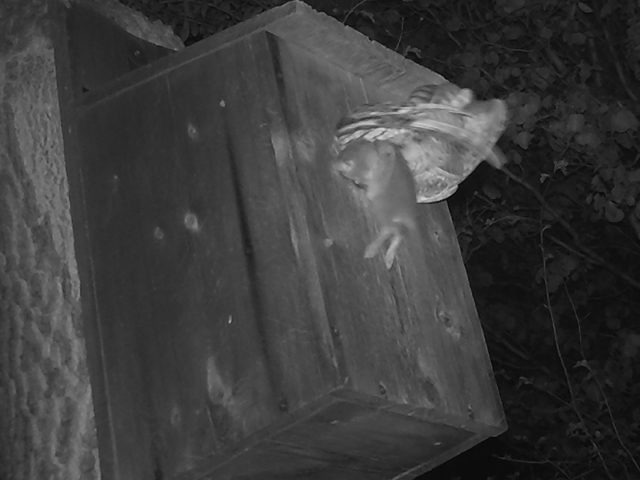

April 5, 2019
Here mom is taking a little break. For those of you who have never seen one before, I’ve included a snapshot of an owl wink. Now you know what an owl’s eyelid looks like!

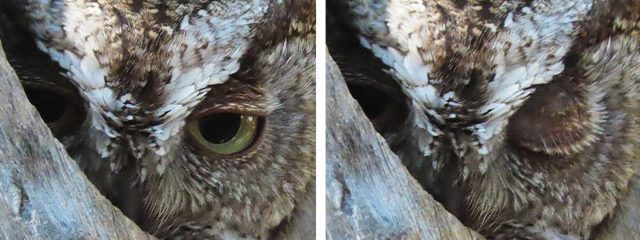
April 13, 2019
Momma screech owl was singing softly today. It attracted the attention of our neighborhood Blue Jays. Jays DO NOT like owls. Momma quickly ditched back inside the nest box!
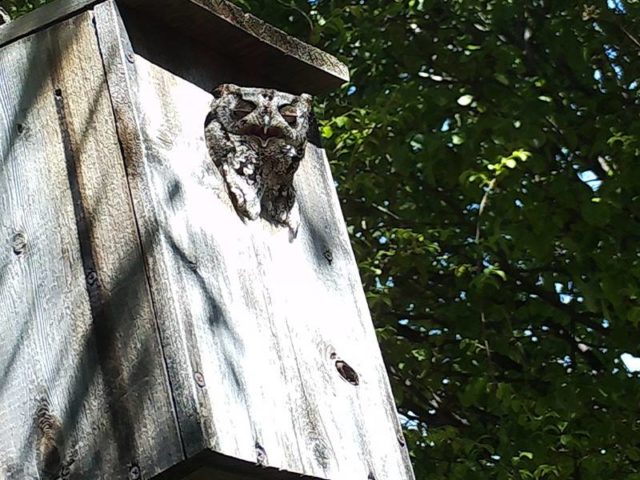
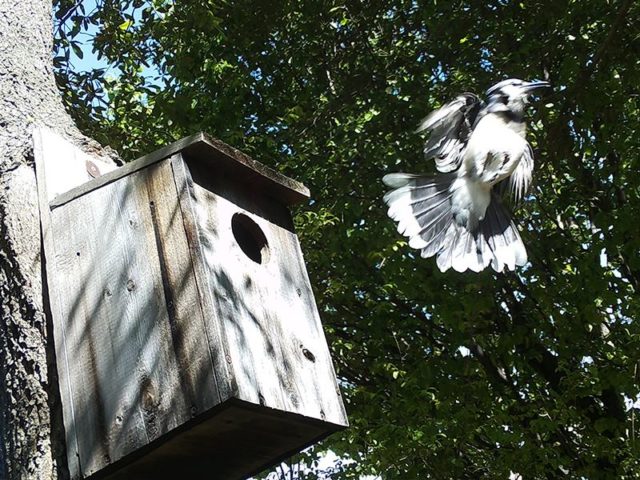
They can handle Blue Jays, no problem!
April 14, 2019
Early this morning it was Fox Squirrel pups assaulting the Owl Box. These three little squirrels are litter-mates, fresh out of the nest. Together they are making a playground out of my backyard, and seem to be using the nest box as “base.” Mom and baby owls are OK, but Momma is clearly NOT amused!
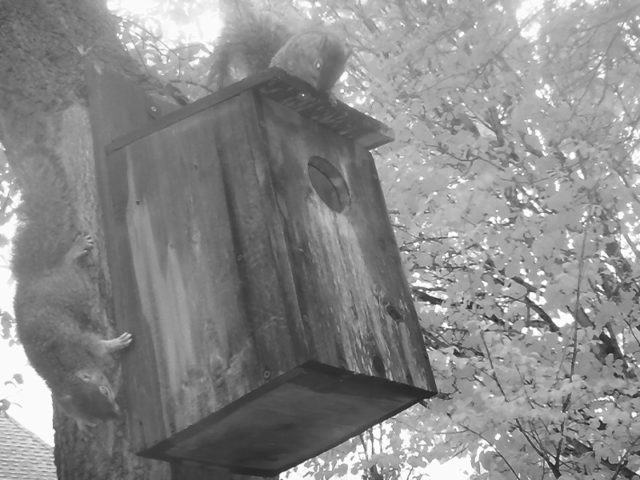
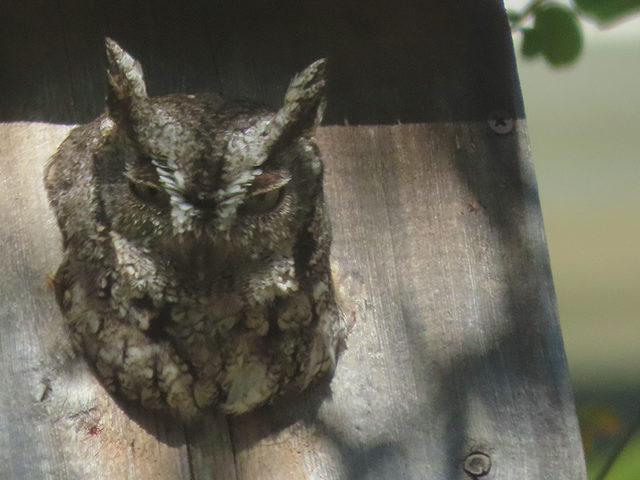
April 18, 2019
We suspect this may be the weekend the owlets begin to branch out from the nest. We will see!
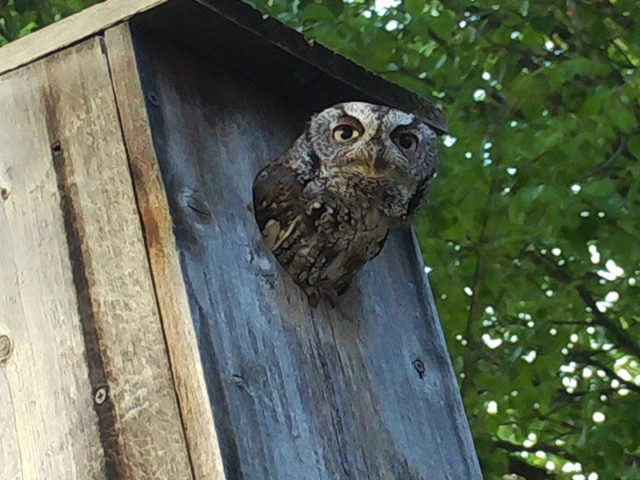
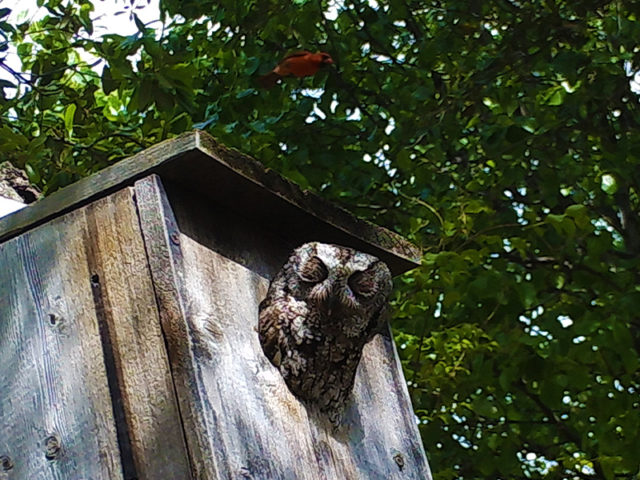
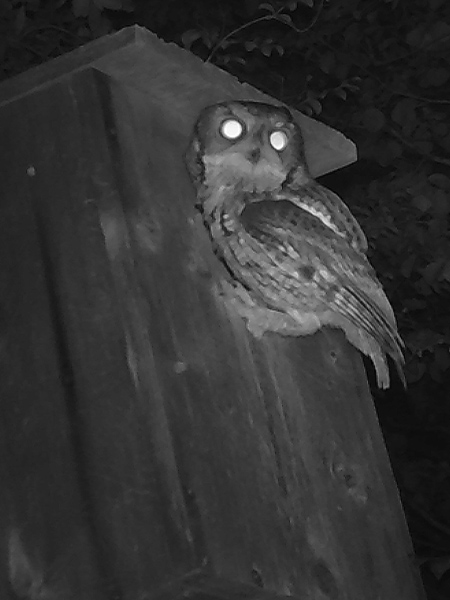
April 20, 2019
We have baby owls! Two is the official count so far… there may be more. They are very hungry.
In this set are a closeup of Mom Owl in the nest box and another of Dad Owl on a branch up above, keeping a close eye on things.

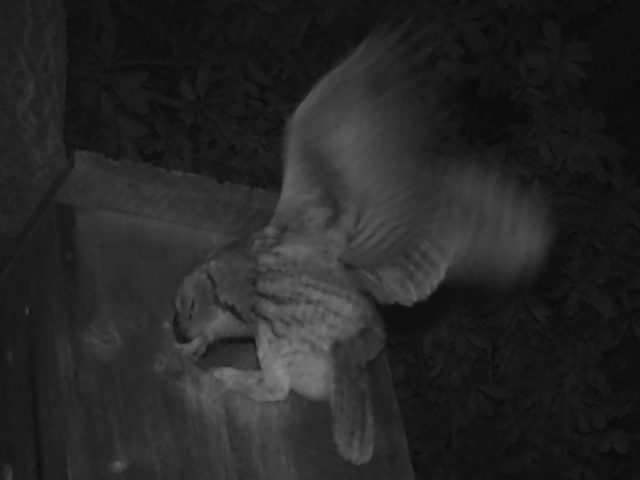

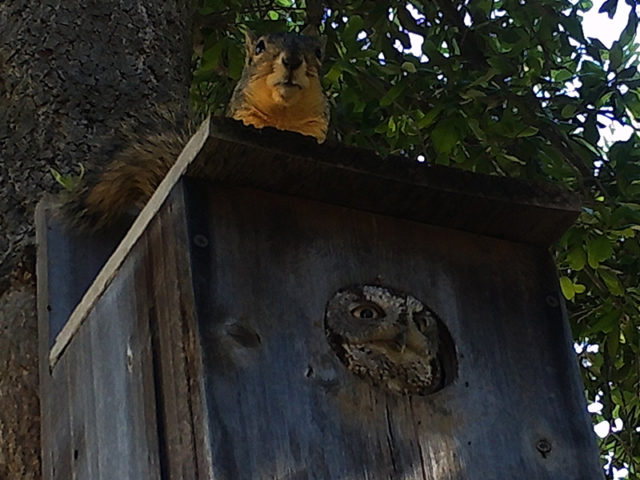
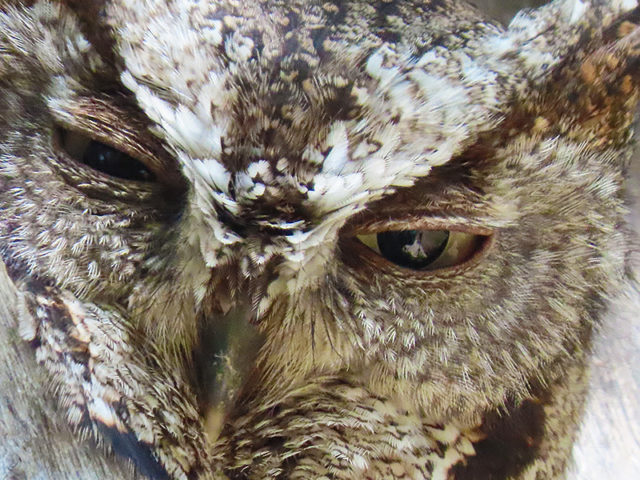
April 22, 2019
Some daytime shots of the baby owls. The exact count is still unknown!
We also have a few shots illustrating why it is sooo hard to find Dad Owl up in the tree above the nest… Sometimes the owlets will give me a hand by staring in his direction!
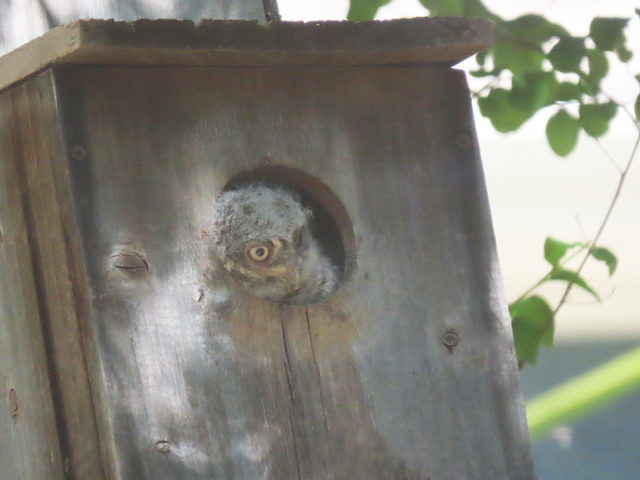
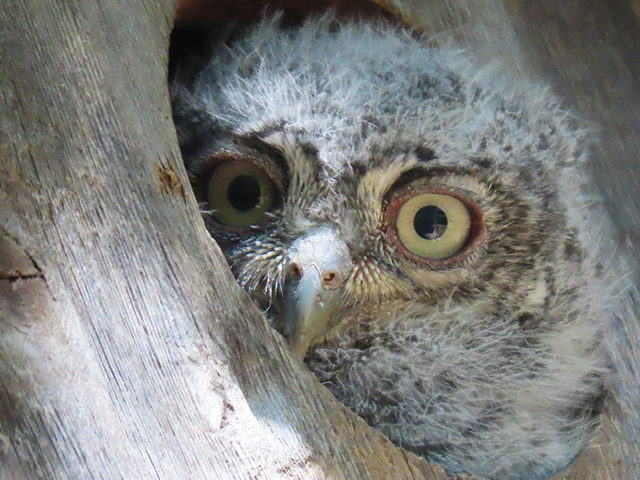
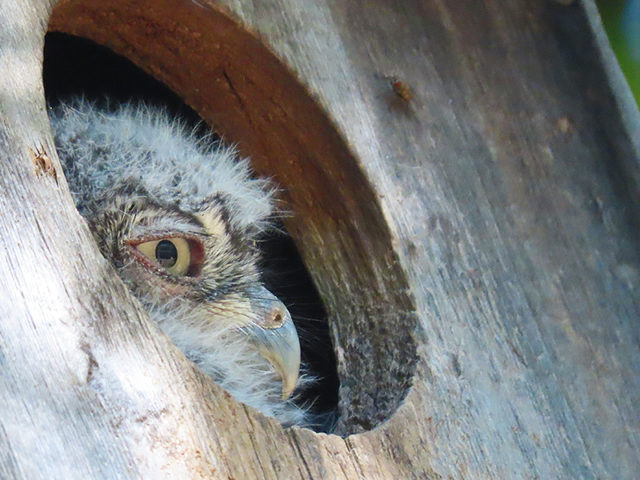
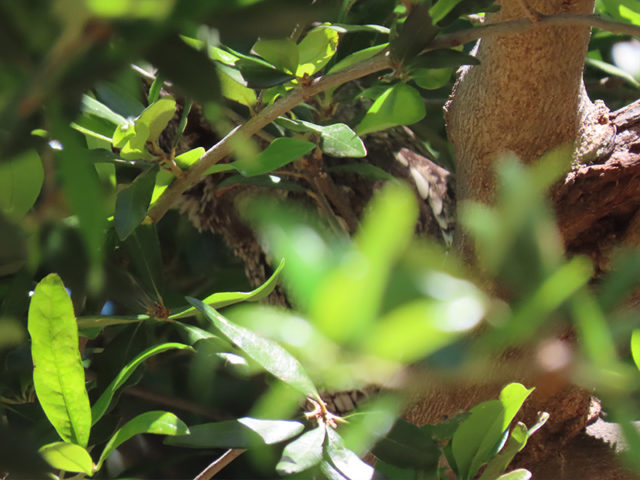
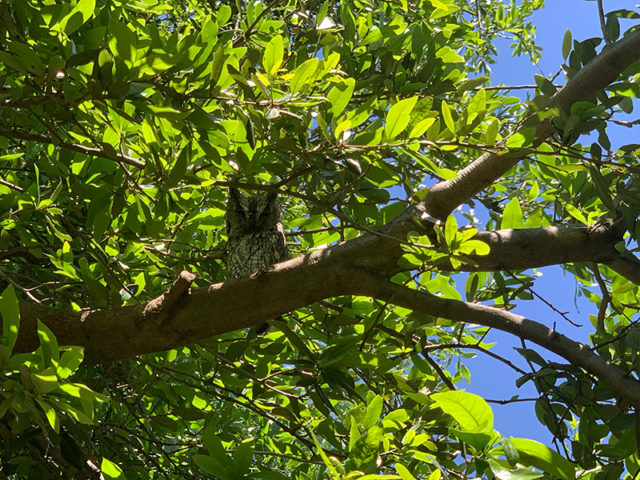
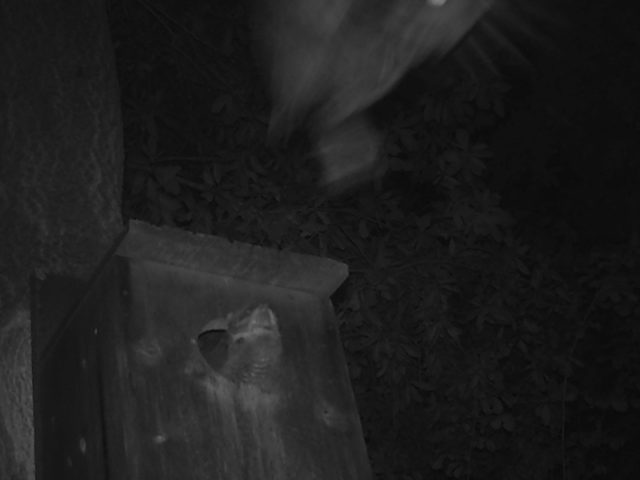

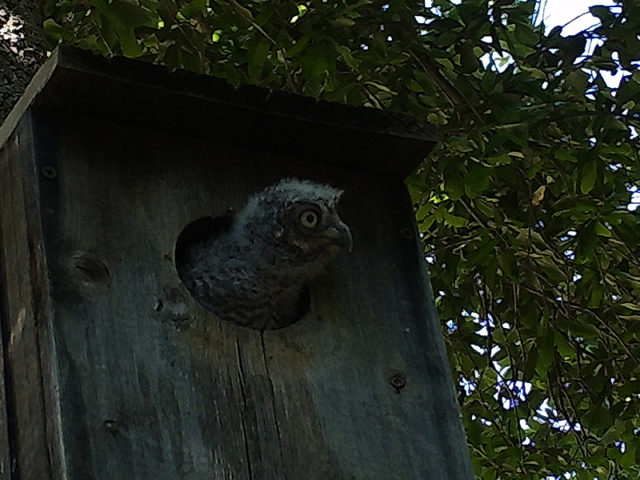
April 25, 2019
The official count… three owlets!
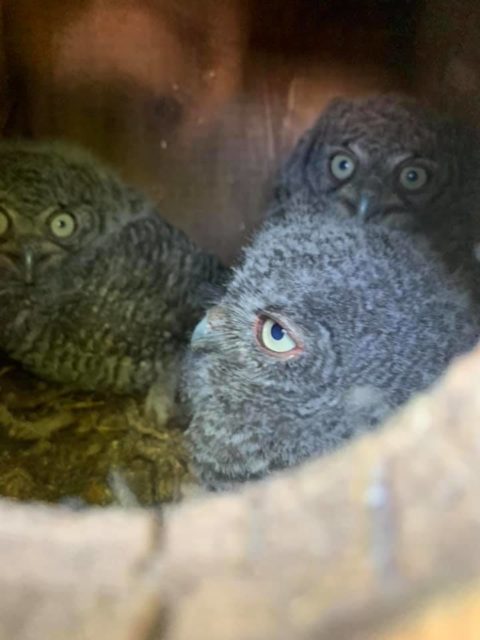
April 26, 2019
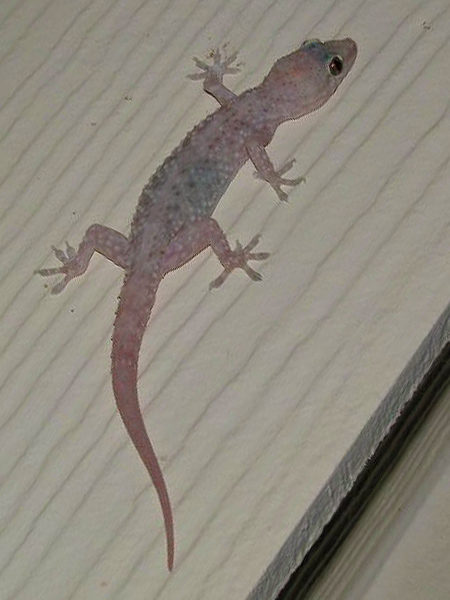
In the days before the owlets left the nest box, things got so crowded that the adults no longer tried to go inside with the babies. From that point on, all food transfers took place outside of the nest box, which facilitated some really great trail camera photographs.
Mediterranean Geckos were on the menu. If you ever wondered what those little lizards are good for… Now you know. They use them to grow baby Screech Owls.
Fortunately, our house had plenty of the little pink lizards. On any given summer night you might find a dozen or so on our front porch and a similar number on our backyard patio.
The adults would return to the nest with more geckos as often as every 20 minutes. The longest interval was about 1 hour 45 minutes. No matter how you slice it, that’s a lot of lizard going down the hatch every night! To this day—nearly a year later—there continues to be dearth of the once abundant geckos around our house.

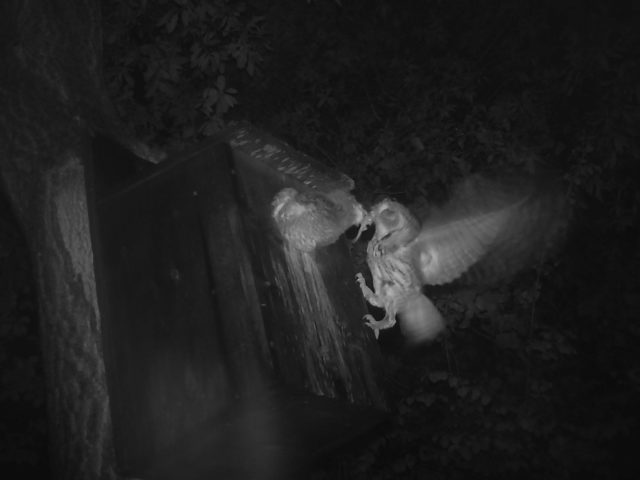
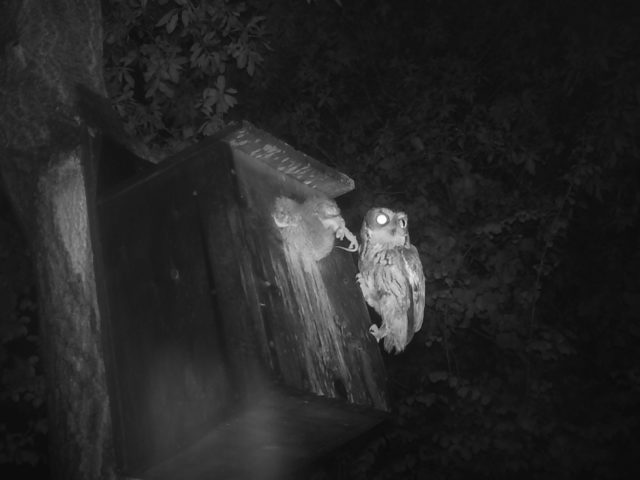

April 27, 2019
It looks like the owlets left the nest sometime just before dawn this morning. Now they are sitting together on one of the top branches of their birth tree. Dad Owl is staying close by and supervising the babies very diligently.
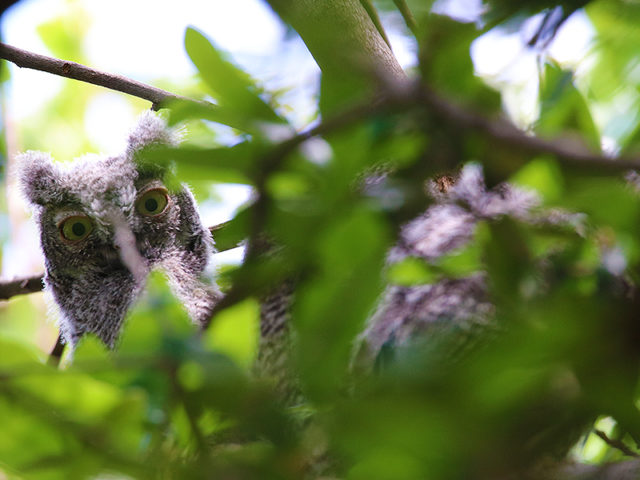
His siblings are there with him, just to the right

April 29, 2019
This is how baby screech owls leave the nest… These guys are so ravenous… Their hunger is so voracious, that they are driven to follow after their parents as they fly away from the nest. Before you know it one of the owlets is outside the box… The other owlets begin to beg HIM for food and try to follow him outside. Soon the whole brood is sitting on a branch high in the tree, and well away from the nest box!
How can you tell the babies from the adults in these black and white images? Hint: The owlets don’t have their tail feathers yet!
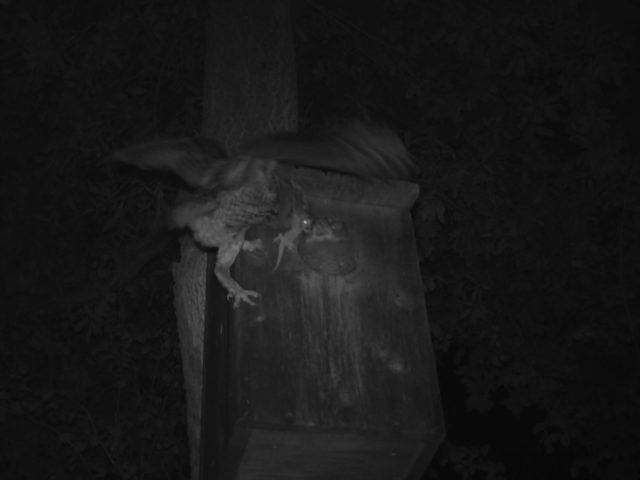
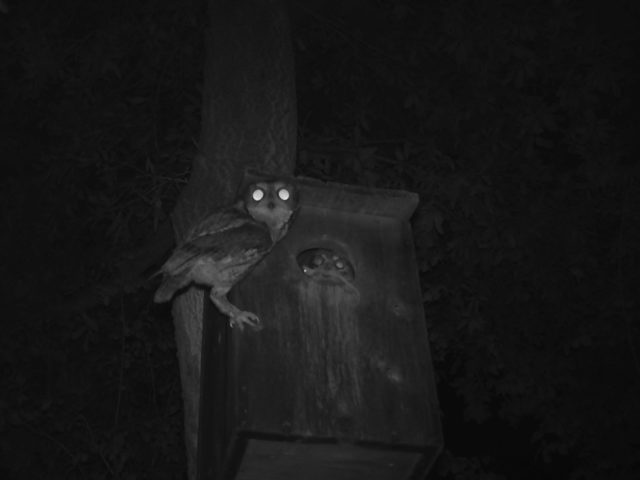
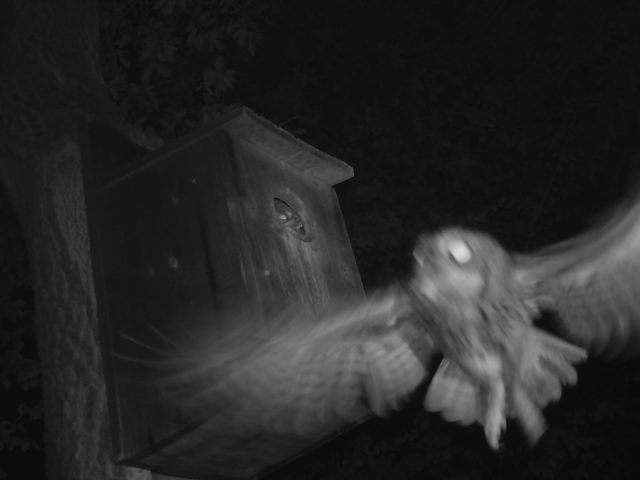
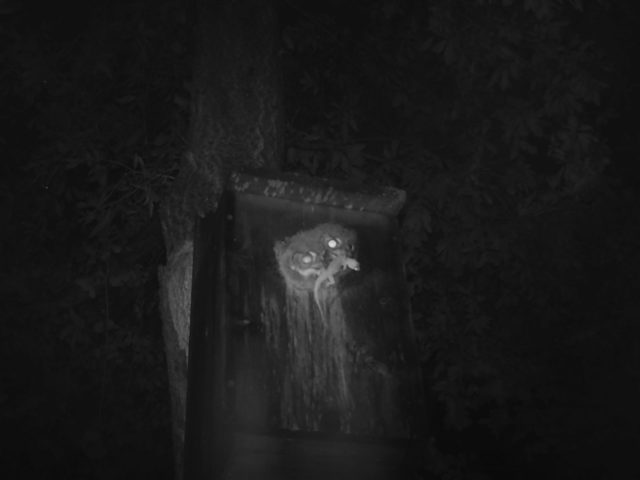


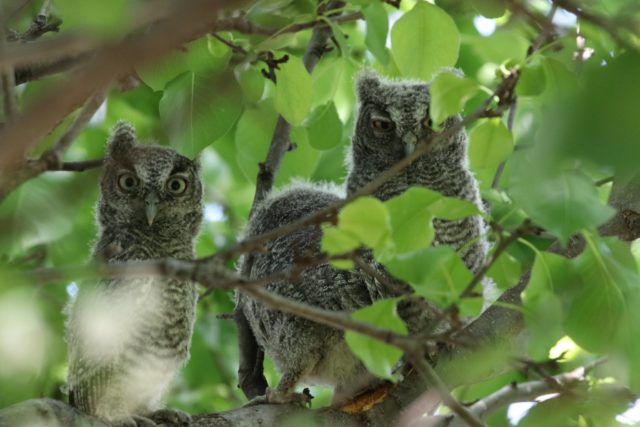
April 30, 2019
The forecast is showing that these little guys may have to suffer through at least 10 straight days of rain—with some instances possibly severe.
Wet weather will be tough on these young owlets. The only upside I can see is that the temperature should stay relatively warm, even at night.
The owlets have been out of the nest for three days now. They have been working on their flying skills, trying to get stronger. Let’s hope they have the strength they need to endure!
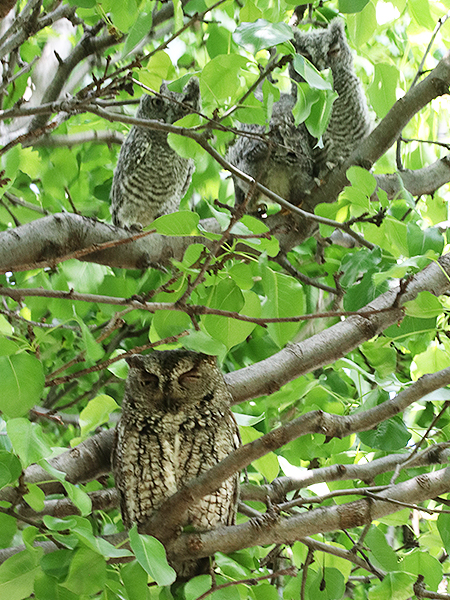
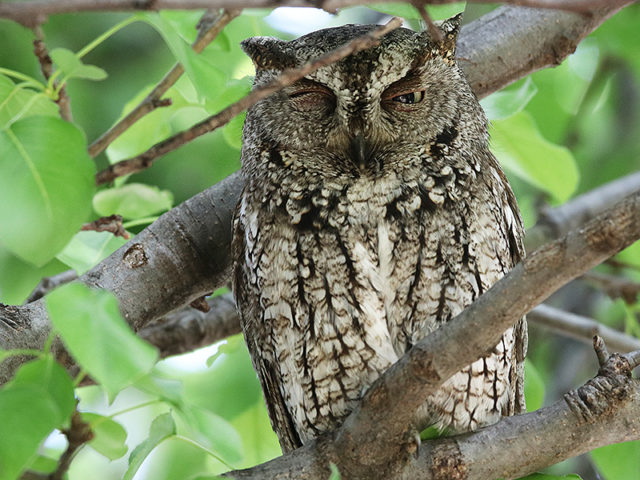

He soon rejoined his siblings in the trees
May 1, 2019
The worst of the storms stayed to the north of us last night. Hoping for the same tonight. Every day that goes by lets these guys get a little bit stronger.
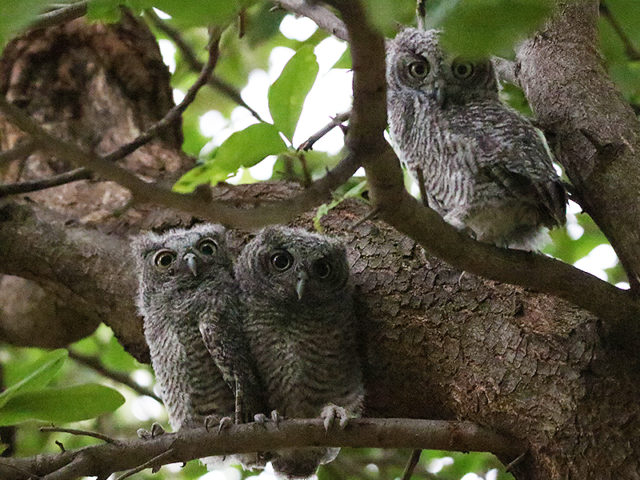
May 2, 2019
Baby Screech Owls: 1
Terrible Thunderstorms: 0
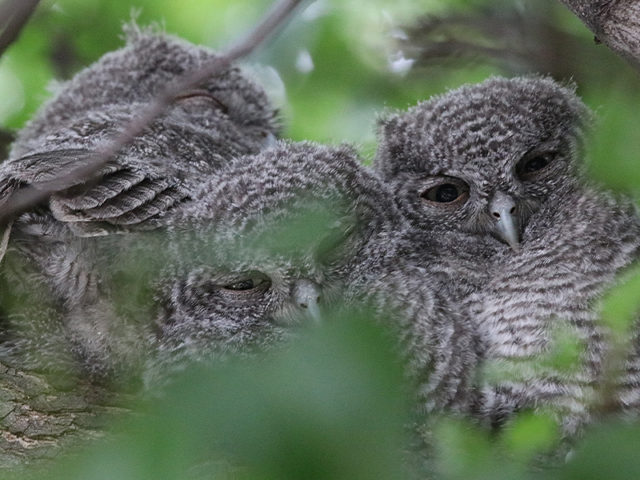
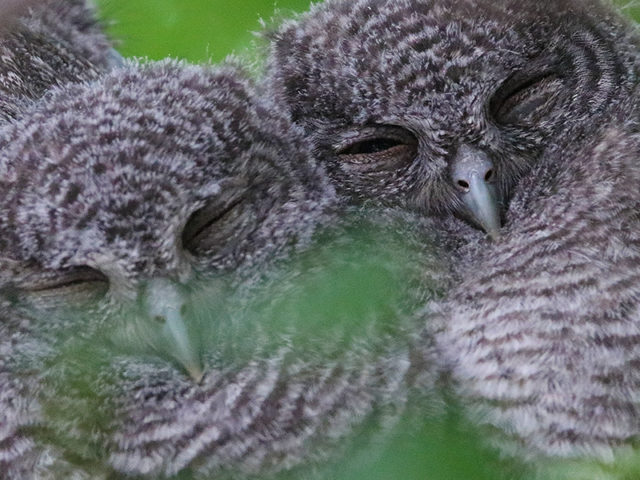
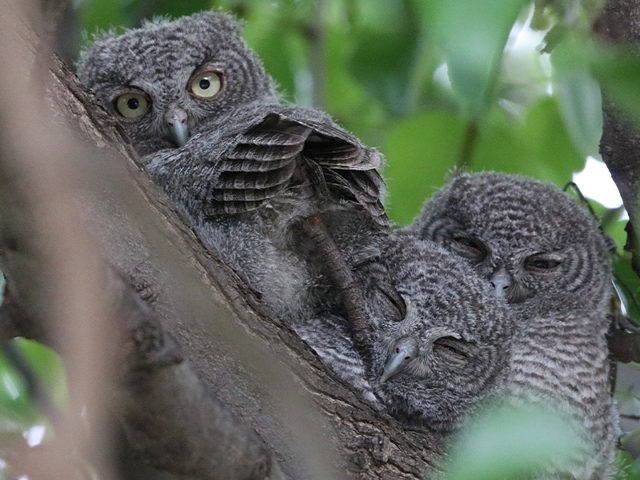
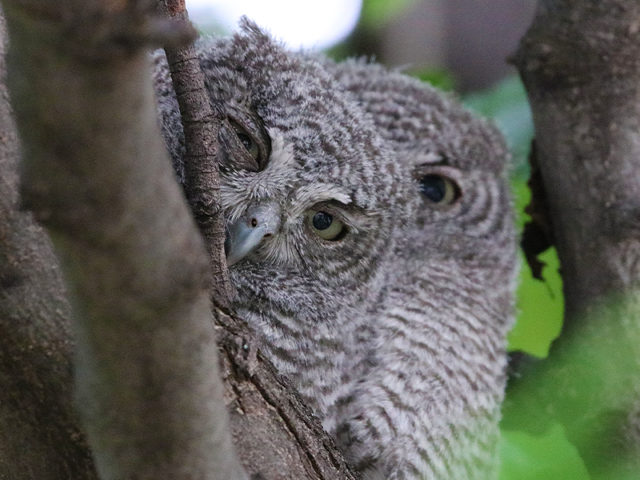
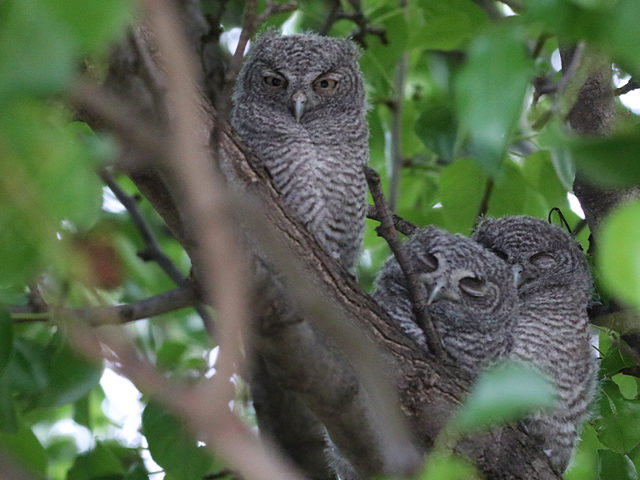

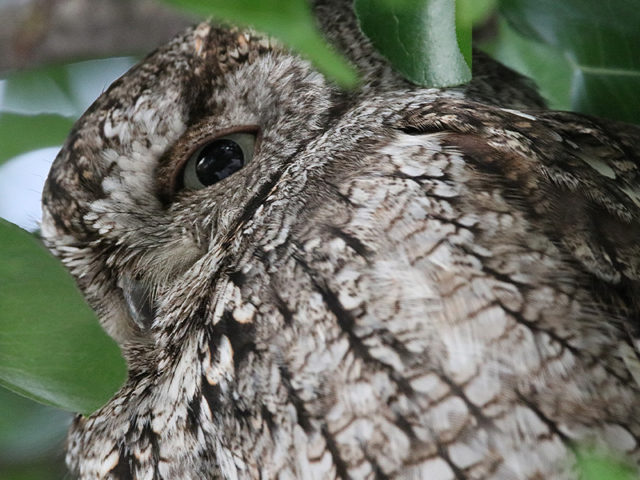
May 8, 2019
It’s been nearly a week since the last time we were able to find the young screech owls in our backyard. They’ve always been difficult to spot high up in the tree where they like to sit, so I gave it a few days to be absolutely sure they were really gone.
Now, we have no reason to believe anything untoward has happened to the owlets. My suspicion is that they have simply moved on down the way, and are now hanging out in another of the hundreds of trees that line our street.
The good news is that the juvenile owls got a real reprieve from the bad weather that was in the forecast last week. Instead of having to endure 10 straight days of rain, the three little owlets only had to ride out one heavy shower—and it wasn’t really that bad.
They’ve now had plenty of time to grow stronger and improve their flying skills. I’m confident they will be able to handle anything nature can throw at them. Here is a selection of the last few pictures we took just before the owls moved on…
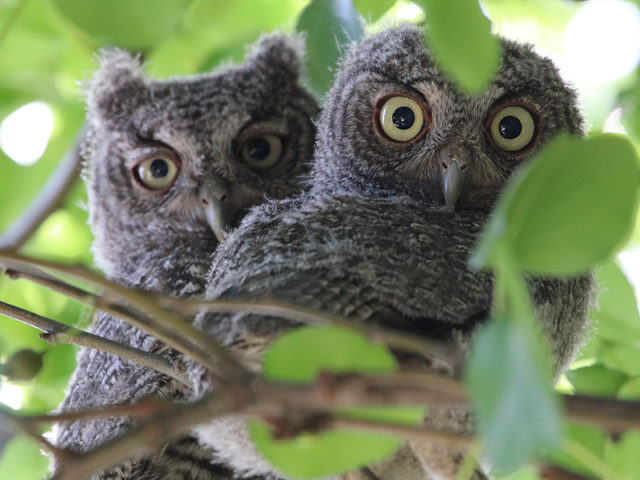
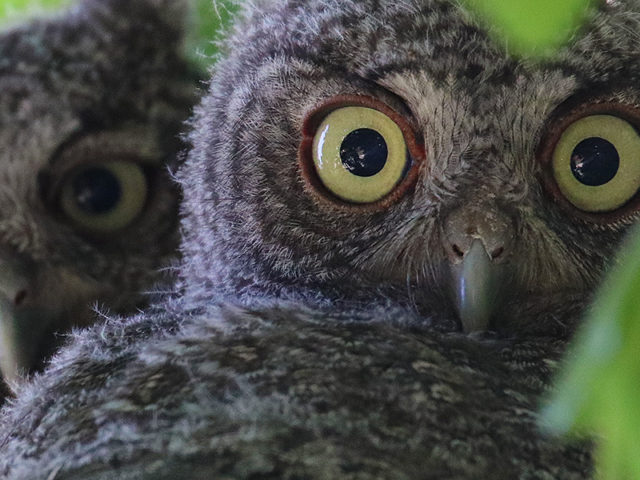
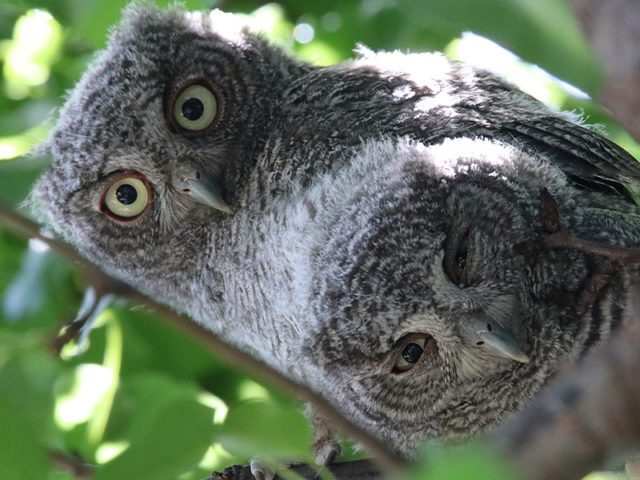
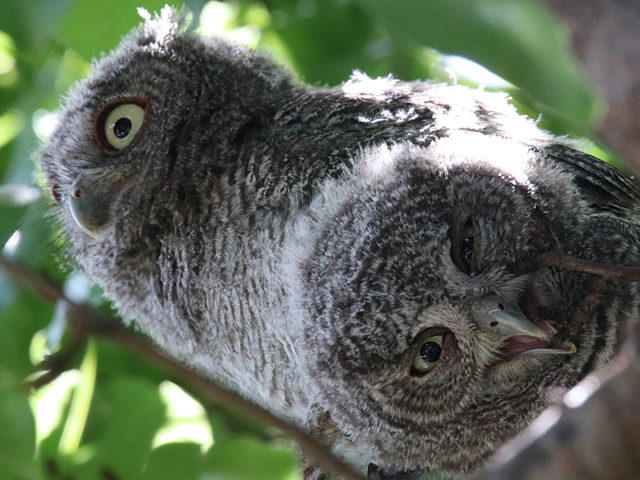
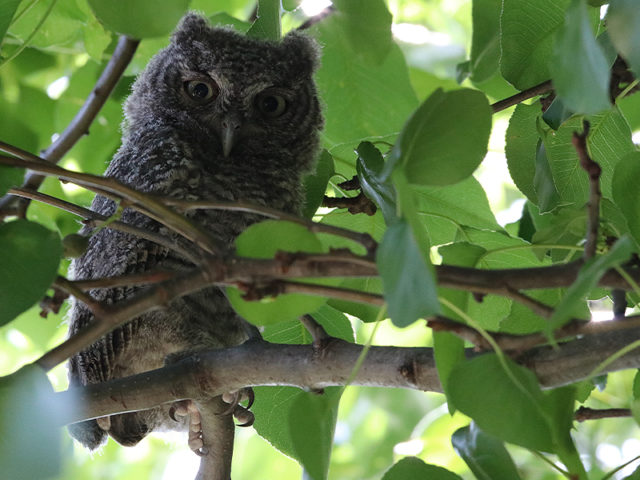
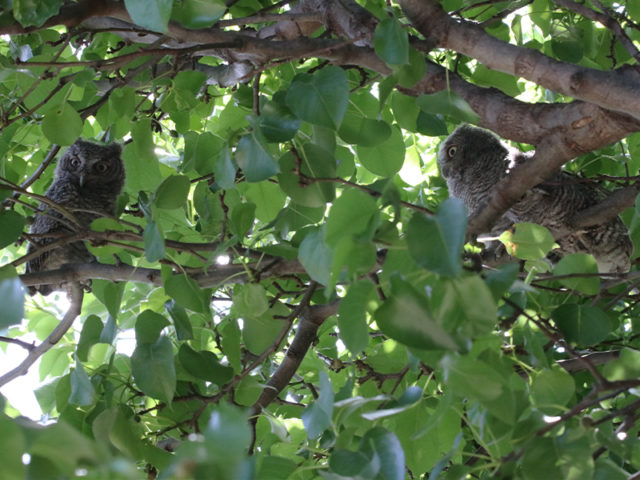
So, that’s it for Owl Season 2019. I’ll close this article with a little bit of interesting Eastern Screech Owl trivia, and also some details about how we recorded the pictures in this set. Trivia first…
As you might imagine, I did a substantial amount of reading about screech owls while all this was going on in our backyard. I was constantly intrigued by these little guys, and always wanted to learn more. As part of my reading, I stumbled across a journal article entitled, Live Blind Snakes in Eastern Screech Owl Nests.
This paper describes a fascinating possible symbiotic relationship between screech owls and this tiny species of snake. Even more, the study backing the article was conducted right here in central Texas… Waco, to be specific.
Here’s how the symbiosis is described by the Audubon website. A link to the full scientific paper can be found on their website as well…
Usually, the owls kill their prey before bringing it home. But if they’re lucky enough to capture the little, worm-like reptiles known as blind snakes, they deliver them to the chicks alive and wriggling.
Some are gulped down immediately, but others have time to escape by burrowing beneath the wood chips, pellets, and other litter strewn across the floor of the nest. These survivors feed on the insect larvae they find there—larvae that would otherwise parasitize the owl nestlings.
A study conducted by Baylor University scientists found that screech-owl chicks grew faster and healthier in nests kept vermin-free by these . . . domesticated . . . blind snakes.
Audubon Website
Ok, and now for a quick summary of the equipment used…
For this impromptu project we used a combination of handheld cameras and remotely triggered trail cameras mounted on tripods. Below are some pictures of our set up.
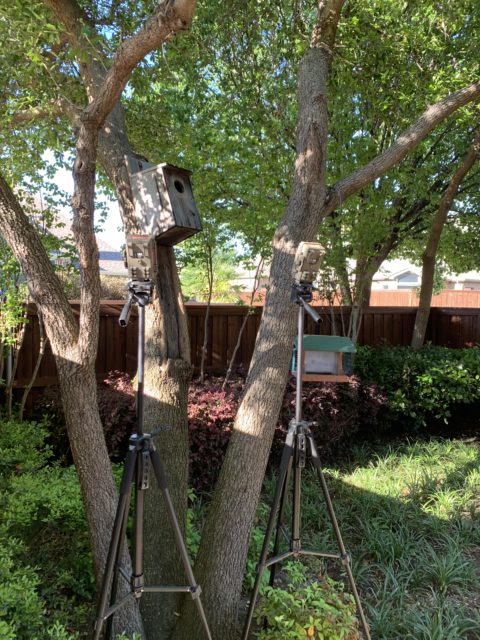

For 2020 we have upgraded our equipment a bit. Now we have a pair trail cameras designed specifically for closeup work. We will be able to install them much closer to the nest box this time around. We also have a wireless video camera mounted inside the owl box for an even more intimate look at what is going on. With a little luck this year’s recordings will be better than ever. Here’s to hoping the owl come back home!



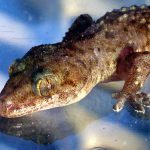
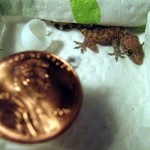
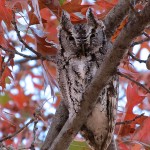

Good job! It is amazing how much life is going on right under our noses. I tell people to check their backyards for what’s going on there–many interesting discoveries are awaiting us. The Life Cycle of most insects is virtually unknown. What a person learns from careful observation may well be undescribed. Journaling, as in this article, is very important. This is a paper which uses the Scientific Method!
Good work! I enjoyed this.
Loved your article and photos. The behavior detail was fascinating. Would you be able to share with me the name and model of your trail camera equipment? Ours did not work well you’re hoping to get a new set up for next Ours did not work well and we’re hoping to get a new set up for next year.
They are Bushnell TrophyCams. Hard to go wrong with TrophyCams!
I live in Carrollton, and recently I’ve noticed a screech owl in the backyard with my security cameras. Since it’s the beginning of September I wonder if there’s any good reason to put up a nest box this time of year or if there’s anything else I can do to help attract the screech owl to stick around until next year when it’s breeding season.
If he is there now, I don’ t think there is any reason to be concerned that he won’t stick around. You can surely put up an owl house if you have a good spot in mind… The squirrels may find it first, but that is always the chance you take. Of course, the owl may already have a nesting cavity that he prefers, so be patient, it may take a few seasons for him to make the switch to your owl house.
I really enjoyed reading and seeing the owl family. I have placed a box September 5 and just found activity!
It is the best feeling knowing these little friends are sheltering with us. I love their inquisitive, curious looks watching us back.
Omg great fun! I have the similar family just starting in my box!!
Thanks so much for sharing this adventure. I am a major animal lover and have rehabbed a number of birds back into the wild. It is so rewarding to know that your guys made it!! I wish you the best in further bird fun! You should be proud!!
I live in Plano. Where can I buy an owl box that’s appropriate for local owls? Thanks.
EDITOR’S NOTE:
You might try Wild Birds Unlimited. They have several locations around the metroplex.
Here’s the link: https://www.wbu.com/